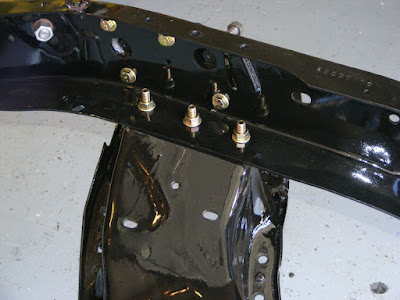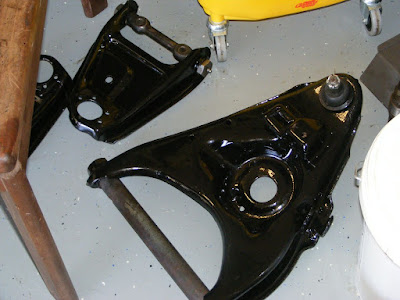I had a problem locating early style big block truck mounts. The ones I did find were outrageously priced. I later found a nice set of tubular mounts on Ebay. The mounts use existing frame holes and were a snap to install. I also picked up a CPP transmission crossmember. It bolts to the lower part of the frame and allows the exhaust to be routed between the frame rails. This is a must for lowered trucks! In place of the old 400 tranny woulb be a 700R4. The new tranny has the benefit of overdrive and was built to hold 550 hp. Between the tranny and motor is a Rev Maxx 3000 RPM stall converter. A great match for the 304HR cam.
The motor was lowered into the chasis as a shortblock without the transmission. I could have joined the two before but decided to wait. The motor went it easy and the motor mounts were a perfect fit.
Before installing the transmission I needed to seat the stall converter. This proved to be a problem. After several hours I gave up. I called Rev Maxx the next day for help. I was told to return the converter to be resplined. Apparently they had a batch of converters get created with oversized input shafts. Drats! I promptly returned the converter and I am currently waiting for its return. In the meantime I put the transmission in place to help support the motor.
Look at the difference between the stock tranny crossmember on the right versus the new tubular replacement
 |
| From Tranny Mount |
 |
| From Engine and Tranny |
The 454 in its final resting place
 |
| From Engine and Tranny |
Tubular motor mounts
 |
| From Engine and Tranny |











































